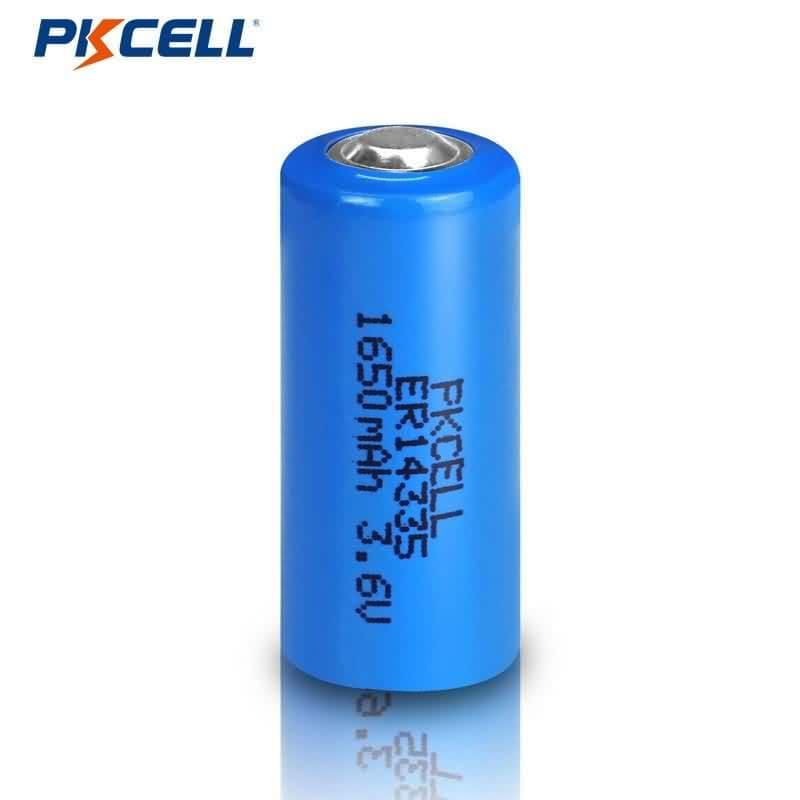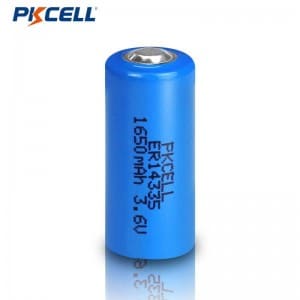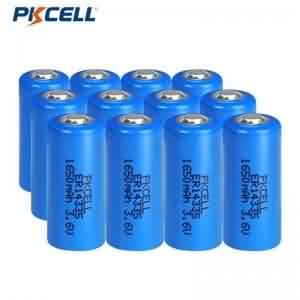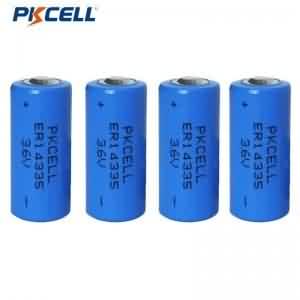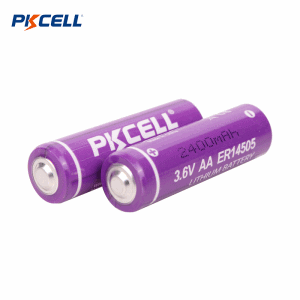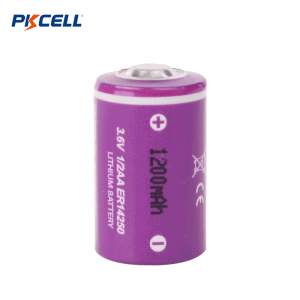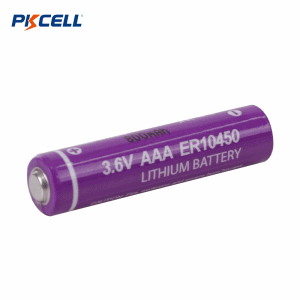3.6V 2/3AA ER14335 Li-SoCl2 Battery (1650mAh) | Pkcell
Understanding ER14335 Battery
The ER14335 lithium 3.6 v battery is a type of battery that can not be recharged. It uses lithium thionyl chloride (Li-SOCl2) in its design. This battery is the size of a 2/3AA. It works well in small electronic devices. The battery has a normal voltage of 3.6 volts and can hold about 1650mAh, though this can change a little between different brands. This battery is good for low-to-medium-current devices that need a steady power source over a long time. It is known for lasting a long time and keeping a constant voltage. It also has a low self-discharge rate, so it's perfect for devices that do not need much care or are rarely used.
Key Features of Pkcell ER14335
- High and Stable Voltage
- High Minimum Voltage During Pulsing
- Stainless Steel Container
- Hermetic Glass-to-metal Sealing
- Low Self-discharge Rate (Less than 1% After 1 year of Storage at +25℃)
- Wide Operating Temperature (-60℃~+85℃)
- Restricted for transport(class 9)
Main Applications of Pkcell ER14335
- Gas Metering
- Utility Metering
- Alarms and Security Devices
- Memory Back-up
- Tracking Systems
- Professional Electronics
Cost-effective Alternatives to Tadiran, Saft, Xeno & Tekcell
| PKCELL ER Model | Equivalent Competitor Model(s) |
|---|---|
| ER26500 | LS26500 (Saft) |
| ER14505 | LS14500 (Saft), XL-145F (Xeno), Tekcell SB-AA02, TL-5186 (varies) |
| ER14250 | TL-5902 (Tadiran), Tekcell 1/2AA, TL-2150, XL-060F, XL-055F, SL-760, TL-5104, LS14250 |
| ER17505 | LS17500 (Saft) |
| ER34615 | LS33600 (Saft), TL-5930 (Tadiran), TL-5920, XL-205F, LSH20 (Saft) |
| ER18505 | LS-18505, TL-5955 (Tadiran) |
| ER17335 | LS-17335, TL-5903 (Tadiran), TL-5903S |
Specification Of Other Li-SOCl2(Energy Type) Models
| Model IEC | Nominal Voltage | Dimensions | Nominal Capacity | Standard Current | Max Continuous Discharge Current | Max Pulse Discharge Current | Cut-off Voltage | Weight Approx | Operating Temperature | |
|---|---|---|---|---|---|---|---|---|---|---|
| ER10450 | AAA | 3.6 | 10.0×45.0 | 800 | 1.00 | 50 | 60 | 2.00 | 9 | -55~+85 |
| ER14250 | 1/2AA | 3.6 | 14.5×25.0 | 1200 | 0.50 | 20 | 45 | 2.00 | 10 | -55~+85 |
| ER14335 | 2/3AA | 3.6 | 14.5×33.5 | 1650 | 0.70 | 75 | 150 | 2.00 | 13 | -55~+85 |
| ER14505 | AA | 3.6 | 14.5×50.5 | 2400 | 1.00 | 100 | 200 | 2.00 | 19 | -55~+85 |
| ER17335 | 3.6 | 17×33.5 | 2100 | 1.00 | 100 | 200 | 2.00 | 30 | -55~+85 | |
| ER17505 | 3.6 | 17×50.5 | 3400 | 1.00 | 100 | 200 | 2.00 | 32 | -55~+85 | |
| ER18505 | A | 3.6 | 18.5×50.5 | 4000 | 1.00 | 120 | 200 | 2.00 | 32 | -55~+85 |
| ER26500 | C | 3.6 | 26.2×50.5 | 8500 | 2.00 | 130 | 300 | 2.00 | 55 | -55~+85 |
| ER34615 | D | 3.6 | 34.2×61.5 | 19000 | 3.00 | 200 | 400 | 2.00 | 107 | -55~+85 |
| ER9V | 3.6 | 48.8×17.8×7.5 | 8500 | 2.00 | 130 | 300 | 2.00 | 16 | -55~+85 | |
More Than Just Individual Cells - We Offer Complete Power Solutions.
- Single Battery With Cables and Connectors
- Custom LiSOCl2 Battery Packs Based on Your Tailored Needs

Why Choose Pkcell Battery?
Typical Discharge Characteristics
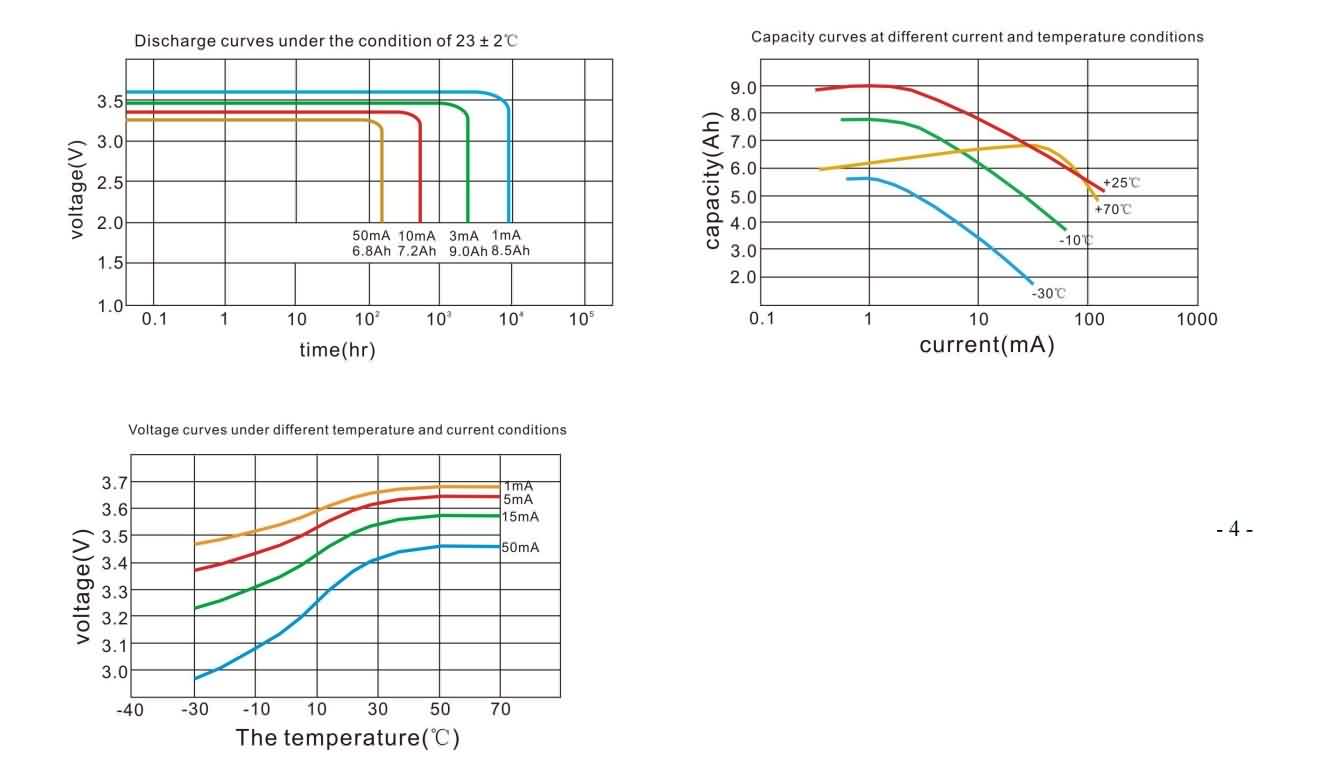
Warning:
- These are non rechargeable batteries.
- Do not recharge, short circuit,crush, disassemble, heat above 100℃ incinerate.
- Do not use the battery beyond the permitted temperature range.
Frequently Asked About LiSoCl2 Battery
- Lead Time: Standard samples typically arrive in 7-12 days. Formal orders usually take around 25 days, though smaller quantities might ship faster, potentially within 15-18 days.
- Payment Methods: We accept various payment types, including T/T (Telegraphic Transfer), L/C (Letter of Credit), and PayPal.
- Shipping: We offer flexibility! Depending on your needs and location, we can ship your order via air freight (using carriers like FEDEX, DHL, UPS, EMS, etc.) or via sea freight.
- Delivery Terms: We can work with several common international shipping terms, including EXW, FCA, FOB, CFR, and DDU.
We have a minimum order value of USD $500. The actual quantity you receive depends on the unit price of the specific batteries you choose. Absolutely! We understand you need to test our products. We're happy to provide samples for your evaluation before you place a formal order.
Passivation is an interesting natural phenomenon observed in Lithium Thionyl Chloride (LiSO₂Cl₂) batteries! When lithium metal touches the thionyl chloride (SOCl₂) electrolyte, a thin, protective layer forms on the surface of the lithium negative electrode. This layer, mostly made up of Lithium Chloride (LiCl), creates a high-resistance barrier that prevents a continuous reaction between the lithium and the electrolyte. Isn't it fascinating how this process helps maintain the battery's performance?
Passivation has some excellent benefits along with a few potential drawbacks that are important to consider:
Benefits:
- Low Self-Discharge: The passivation layer does a fantastic job of slowing down any unwanted side reactions between the lithium and the electrolyte, leading to an impressively low self-discharge rate. Thanks to this, LiSO₂Cl₂ batteries can be stored for many years, often over 10 years, while still keeping most of their capacity intact.
- Long Shelf Life: Because of the low self-discharge, these batteries can hold onto their energy for quite an extended period, which is great for long-term storage.
Potential Drawbacks:
- Voltage Delay: When a passivated battery starts discharging—especially after being stored or during high-current pulses—the current first needs to break through or dissolve the high-resistance passivation layer. This can temporarily drop the battery's voltage below its normal operating level before it bounces back. This occurrence is often referred to as "voltage delay."
No, ER14335 batteries are non-rechargeable primary lithium cells. Recharging can lead to safety hazards, including leakage or explosion.
Thanks to its low self-discharge rate (<1% per year at 20°C), the ER14335 can operate for up to 10 years in low-drain applications.
Standard ER14335 batteries have limited pulse current capability. For applications that require pulses (e.g., wireless transmissions), it's advisable to pair with a capacitor or choose an HLC version.
Its rugged temperature range, stable voltage, and excellent shelf life make it ideal for mission-critical and long-term deployments, especially where battery replacement is difficult.
While both use the same chemistry, ER14335 is larger and has higher capacity (1650mAh vs. ~1200mAh for ER14250), making it better suited for slightly higher energy demands without increasing voltage.


